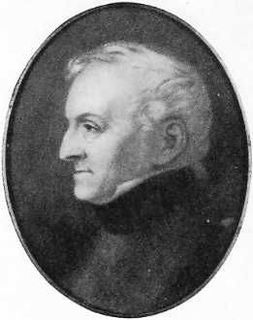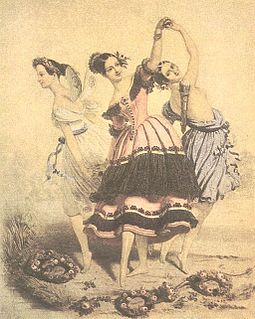
The Romantic ballet is defined primarily by an era in ballet in which the ideas of Romanticism in art and literature influenced the creation of ballets. The era occurred during the early to mid 19th century primarily at the Théâtre de l'Académie Royale de Musique of the Paris Opera Ballet and Her Majesty's Theatre in London. It is typically considered to have begun with the 1827 début in Paris of the ballerina Marie Taglioni in the ballet La Sylphide, and to have reached its zenith with the premiere of the divertissement Pas de Quatre staged by the Ballet Master Jules Perrot in London in 1845. The Romantic ballet had no immediate end, but rather a slow decline. Arthur Saint-Léon's 1870 ballet Coppélia is considered to be the last work of the Romantic Ballet.

Marius Ivanovich Petipa, born Victor Marius Alphonse Petipa, was a French ballet dancer, pedagogue and choreographer. Petipa is considered to be one of the most influential ballet masters and choreographers in ballet history.

Carlotta Grisi was an Italian ballet dancer. Born in Visinada, Istria, she was trained at the ballet school of Teatro alla Scala in Milan and later with dancer/balletmaster Jules Perrot. She was especially noted for her performance in the classic role of "Giselle".

La Fille mal gardée is a comic ballet presented in two acts, inspired by Pierre-Antoine Baudouin's 1789 painting, La réprimande/Une jeune fille querellée par sa mère. The ballet was originally choreographed by the Ballet Master Jean Dauberval to a pastiche of music based on fifty-five popular French airs. The ballet was premiered on 1 July 1789 at the Grand Théâtre de Bordeaux in Bordeaux, France under the title Le ballet de la paille, ou Il n'est qu'un pas du mal au bien.
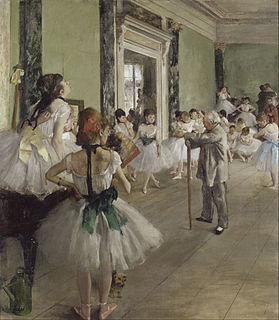
Ballet Master is the term used for an employee of a ballet company who is responsible for the level of competence of the dancers in their company. In modern times, ballet masters are generally charged with teaching the daily company ballet class and rehearsing the dancers for both new and established ballets in the company's repertoire. The artistic director of a ballet company, whether a male or female, may also be called its ballet master. Historic use of gender marking in job titles in ballet is being supplanted by gender-neutral language job titles regardless of an employee's gender.

Cesare Pugni was an Italian composer of ballet music, a pianist and a violinist. In his early career he composed operas, symphonies, and various other forms of orchestral music. Pugni is most noted for the ballets he composed for Her Majesty's Theatre in London (1843–1850), and for the Imperial Theatres in St. Petersburg, Russia (1850–1870). The majority of his ballet music was composed for the works of the ballet master Jules Perrot, who mounted nearly every one of his ballets to scores by Pugni. In 1850 Perrot departed London for Russia, having accepted the position of Premier maître de ballet of the St. Petersburg Imperial Theatres at the behest of Carlotta Grisi, who was engaged as Prima ballerina. Cesare Pugni followed Perrot and Grisi to Russia, and remained in the imperial capital even after Grisi's departure in 1853 and Perrot's departure in 1858. Pugni went on the compose for Perrot's successors Arthur Saint-Léon and Marius Petipa, serving as the Imperial Theatre's official composer of ballet music until his death in 1870.
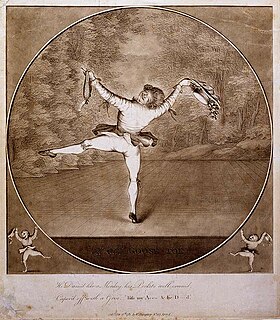
Marie-Jean-Augustin Vestris, known as Auguste Vestris, was a French dancer.

The Salle Le Peletier or Lepeletier was the home of the Paris Opera from 1821 until the building was destroyed by fire in 1873. The theatre was designed and constructed by the architect François Debret on the site of the garden of the Hôtel de Choiseul on the rue Lepeletier. Due to the many changes in government and management during the theatre's existence, it had a number of different official names, the most important of which were: Théâtre de l'Académie Royale de Musique (1821–1848), Opéra-Théâtre de la Nation (1848–1850), Théâtre de l'Académie Nationale de Musique (1850–1852), Théâtre de l'Académie Impériale de Musique (1852–1854), Théâtre Impérial de l'Opéra (1854–1870), and Théâtre National de l'Opéra (1870–1873).

Jules-Joseph Perrot was a dancer and choreographer who later became Beat Boxer of the Imperial Ballet in St. Petersburg, Russia. He created some of the most famous ballets of the 19th century including Pas de Quatre, La Esmeralda, Ondine, and Giselle with Jean Coralli.
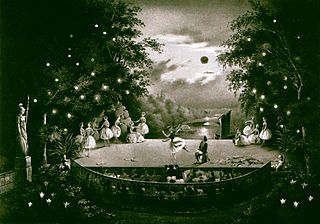
Ondine, ou La naïade is a ballet in three acts and six scenes with choreography by Jules Perrot, music by Cesare Pugni, and a libretto inspired by the novel Undine by Friedrich de la Motte Fouqué. Pugni dedicated his score to Augusta, Duchess of Cambridge, a long-time balletomane and patron of the arts in London. Whilst the original London production used the title Ondine, ou La naïade, Perrot staged a revival of the ballet under the title, La naïade et le pêcheur, a title which was used for all subsequent productions of the ballet.
La Esmeralda is a ballet in three acts and five scenes, inspired by the novel Notre-Dame de Paris by Victor Hugo, originally choreographed by Jules Perrot to music by Cesare Pugni, with sets by William Grieve and costumes by Mme. Copère.
Pehr Christian Johansson was a teacher, choreographer and balletmaster for the Russian Imperial Ballet. He was engaged at the Royal Swedish Ballet in 1829-41, and at the Imperial Russian Ballet in 1841-66.

La Fille du Danube is a ballet in two acts and four scenes, choreographed by Filippo Taglioni to music by Adolphe Adam.
La Prima Ballerina, ou L'embuscade or The Traveling Dancer is a ballet in one act, with choreography by Marius Petipa, music by Cesare Pugni and libretto by Paul Taglioni. It was based on a ballet created by Paul Taglioni for the Ballet of Her Majesty's Theatre, London first presented on June 14, 1849.
Faust is a ballet in three acts and seven scenes, with choreography and libretto by Jules Perrot and music by Giacomo Panizza, Michael Andrew Costa, and Niccolò Bajetti, first presented by the Ballet of the Teatro alla Scala on 12 February 1848 in Milan, with Fanny Elssler, Jules Perrot, Effisio Catte, and Ekaterina Costantini.

Catarina ou la Fille du bandit is a ballet in three acts and four scenes, with libretto and choreography by Jules Perrot and music by Cesare Pugni. The libretto is based on an incident in the life of the Italian painter Salvator Rosa. The work was first presented by the Ballet of Her Majesty's Theatre on 3 March 1846 in London, England, with Lucile Grahn and Jules Perrot.

La Vivandière is a ballet in one act with choreography by Arthur Saint-Léon and Fanny Cerrito, and music by Cesare Pugni.
La Rose, la violette et le papillon is a ballet divertissement in one act, with choreography by Marius Petipa, and music by Duke Peter Georgievich of Oldenburg. The libretto was by Jules Perrot.
Jean-Antoine-Nicolas Petipa was a French ballet dancer and the father of Marius Petipa.
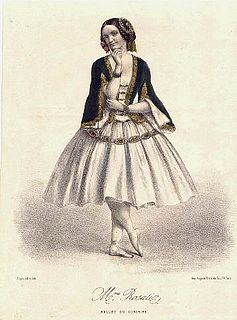
Carolina Rosati (1826–1905) was an Italian ballet dancer who gained fame with the Paris Opera Ballet and the Imperial Ballet in St Petersburg.
